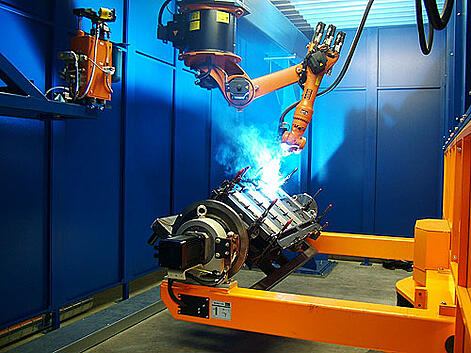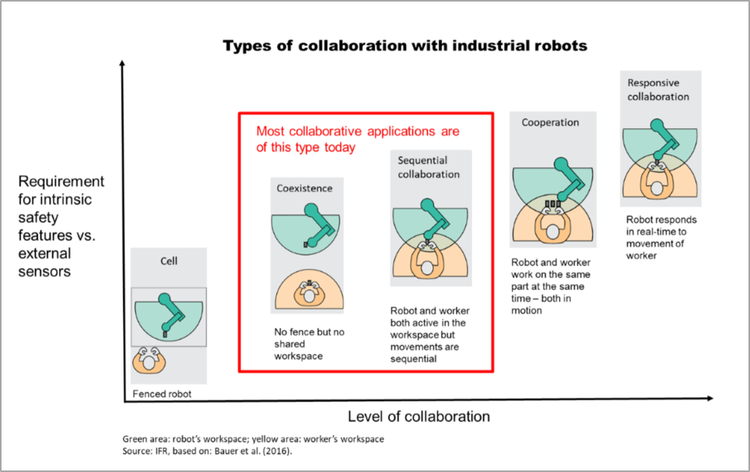Busting Common Myths about Robots: Part I

Posted on Jul 25, 2016 7:00 AM. 4 min read time
Change incites fear. Since the industrial revolution, humans have been remarkably consistent about fearing the worst when new technology appears. We managed to survive 2001 without HAL taking over, and Skynet is still not self-aware. However, that doesn’t stop doomsday scenarios and misconceptions based on science fiction and entertainment news headlines to dominate technology conversations. Robots are among the latest victims of this fear mentality, but is the fear warranted? Take a look at several common myths that cause people to fear robots in the workplace.
Myth 1 – Robots Take Jobs Away From People
Just like when personal computers first went mainstream in businesses, certain time-consuming jobs were no longer needed to be done by employees, but many new jobs such as programming became available. When collaborative robots are used for dull, repetitive jobs, human workers can focus on tasks that require creativity and problem-solving. The public misconception is that robots are automatons that will replace humans. While life-like robots and artificial intelligence do exist, they’re not replacements for humans.
A more accurate way to think of robots in the workplace is to think of them as incredibly flexible tools that help humans be more efficient. Would you rather start your day by looking at the mountain of parts that need placing or start by wheeling a robot into place to do that work so you can do something more interesting that a robot can’t do? By increasing production and efficiency, a robot-enhanced workforce can be incredibly cost-competitive. Adding robots to a local workforce could even reduce the possibility of production being sent to an area where labour is cheaper, in effect saving jobs. Myth busted.
Find out more:
Myth 2 – Robots Are Dangerous
While it is possible that a criminally-minded person could create an “evil” robot with the intention to do more harm than good, robots are not inherently dangerous. Collaborative robots are designed to safely work with humans, eliminating the need for fencing and large, secure enclosures. By doing repetitive or dangerous tasks that would injure human workers, robots can even improve workplace safety. Myth busted.
dangerous tasks that would injure human workers, robots can even improve workplace safety. Myth busted.
New ISO specifications were just issued this year to address safe collaborative robotic applications in a work environment with humans. Using these specifications can help ensure that the robot you are implementing has the appropriate force and pressure levels, as well as the speed and power limits recommended for collaborative work. To create a safe environment, it’s important complete a risk assessment. For more information, download our ISO/TS 15066 Explained and How to perform a Risk Assessment guide.
Find out more:
Myth 3 – Robots Are Difficult to Implement and Require Operators with Advanced Programming Skills
Unlike traditional industrial robots, collaborative robots are designed to be mobile and flexible. That means they’re lightweight and can be easily re-programmed and set up to perform different tasks. A half-day of training is all that’s needed for someone with a logical understanding of how a process is sequenced. An external specialist is not required. The interface used to program a collaborative robot is purposely designed to be intuitive, no more difficult or complex to understand than a smartphone. Manually guiding the robot arm into position makes setup even easier. Myth busted.
FInd out more:
Myth 4 – Robots Aren’t Much Fun at Company Parties
This one is true. Robots usually don’t tell original jokes, and their stories about their weekends are pretty predictable. When it’s break time, leave the robots doing the work and enjoy the company of your fellow humans.
Find out more:







Leave a comment